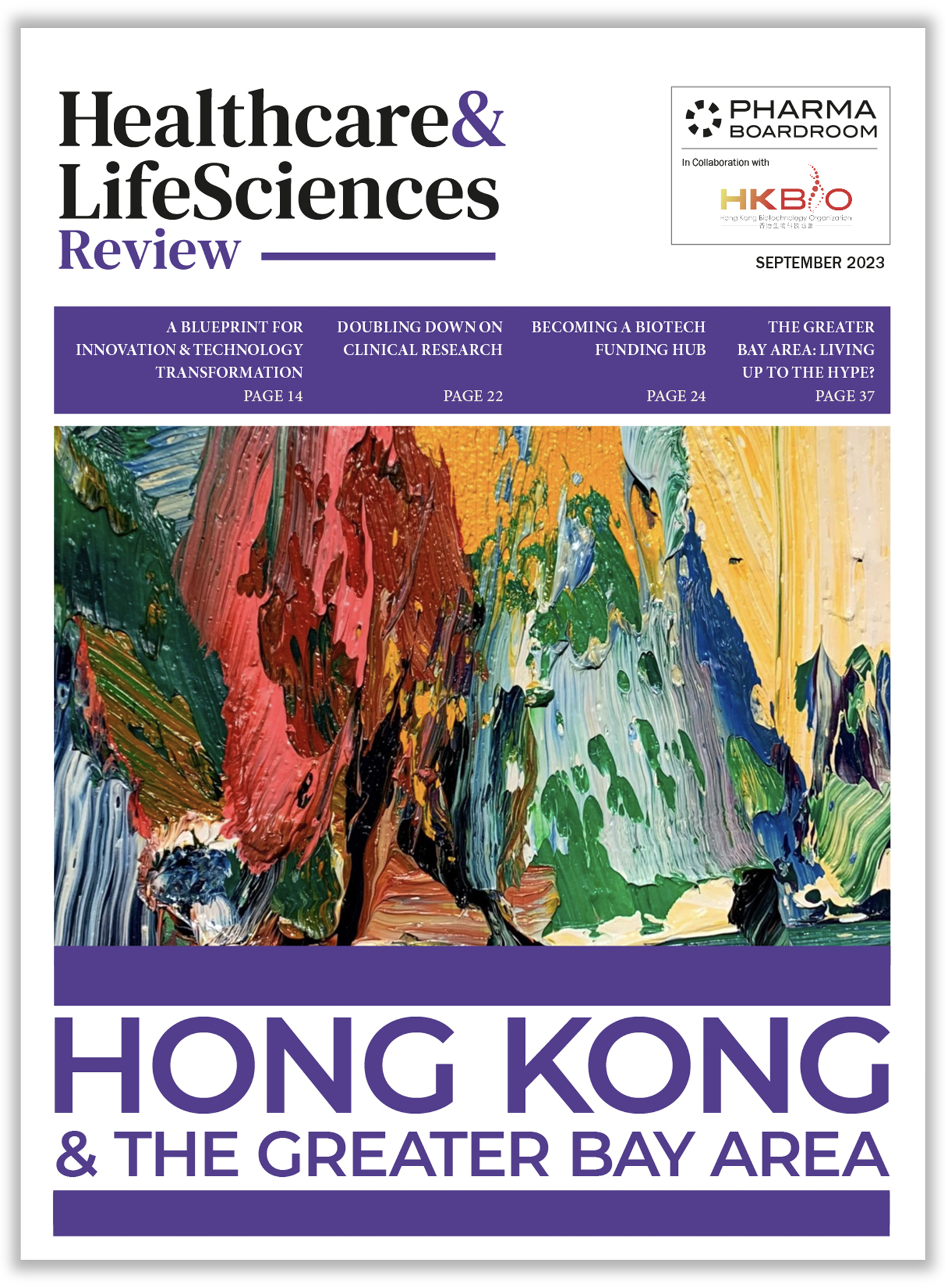IAS - the International AIDS Society - is a 13,000-plus member organisation that aims to unite the worlds of HIV science, policy, and activism, and organises the biennial International AIDS Conference among other activities. IAS Executive Director Birgit Poniatowski lays out what attendees at the upcoming conference in Munich this July can expect; how stakeholders can work together more productively to meet the UN's 2030 goal of ending HIV as a public health threat; and the importance of maintaining the pharma industry's interest, engagement, and investment in HIV.
What is IAS – the International AIDS Society – and who does it represent?
The IAS has been around for more than 40 years and was initially established by scientists concerned about the emerging AIDS pandemic. We have over 13,000 members all over the world, including scientists, clinicians, people living with HIV, policymakers and funders.
Our vision is a world where HIV is no longer a threat to public health and no longer a threat to individual well-being. We bring science, policy and activism together throughout all our activities, including the biennial International AIDS Conference, the IAS Conference on HIV Science, and the HIV Research for Prevention Conference.
On top of that, we have a range of thematic programmes that convene, advocate and educate – similar to our conferences – but on specific topics identified by our Governing Council. These programmes work to close knowledge gaps, improve service delivery, and disseminate evidence. The first category includes programmes on paediatric HIV, HIV vaccines and HIV cure. Our programmes on differentiated service delivery, person-centred care, community-led monitoring and stigma support better service delivery. Our academic publication – the Journal of the International AIDS Society – is one of our mechanisms to disseminate knowledge. The IAS Educational Fund is another. The latter was established in 2016 with support from Gilead Sciences and ViiV Healthcare, who continue to fund it along with MSD; public funders have also been engaged. The Educational Fund takes the new science presented at our and other conferences, such as CROI, and organizes smaller meetings to contextualize it in a particular region or country.
How is the IAS funded?
Our members pay a very small fee, which basically covers member services. Our programmes operate with earmarked grants from foundations, the pharmaceutical industry and governments. Where pharma is involved, we have clear firewalls in place, and the private sector is not able to dictate who is involved in our meetings or what we publish. In terms of conferences, 40 percent of the funding comes through registration fees, 40 percent from donors and sponsors (such as host country sources, public sector funders, foundations and private industry), and the remaining 20 percent from the sale of satellite sessions and exhibition space.
The idea of ending HIV as a public health threat is well-established but you mention that the IAS also aims to create a world where HIV is no longer a threat to individual well-being. Why is this goal also important?
It is all about looking beyond diseases to the individuals affected by them. In the past, we used to have a co-infections and co-morbidities programme that worked on individual diseases – like hepatitis, tuberculosis and non-communicable diseases. However, a few years ago, we shifted our perspective to focus on people with all their different health needs throughout their life course, which in particular, but not exclusively, informs our programmes on improved service delivery.
Our first organizational value is putting people first. Including individual well-being in the overarching vision and goal reflects that shift in perspective. It also helps us maintain focus on people who are currently left out, are not being found by health systems, and have barriers to accessing services.
The UNAIDS target of ending HIV as a public health threat by 2030 is realistically not going to happen; what is the benefit of setting such ambitious goals?
Goals, in and of themselves, are good for focus and accountability. The 2030 goals are not the last mile, and the lack of political will to work towards achieving them is a big concern. We do have the tools in place to end HIV as a public health threat but are not currently using them effectively. While we still lack a cure and a vaccine, there are excellent prevention and treatment options available, but the latest versions are often not accessible where the need is greatest.
Long-acting technologies for both treatment and prevention or combination prevention options, particularly for women, are not reaching everybody who needs them. This massive lag in access is really the main problem, and even if licensing agreements are put in place, it takes years for the generic versions to hit the relevant markets.
Again, the problem here is political will, which is exacerbated by the conservative backlash we are seeing in many places, not just in Ghana and Uganda, but also in the United States and elsewhere. This is putting the gains we have made in danger and is a further barrier towards reaching the 2030 goals.
Why do we need to continue to put resources into HIV vaccine research, given it has thus far proved so elusive to researchers?
What we want and need is a vaccine that with two or three shots provides good protection for a long time. This is different from even a long-acting PrEP product, where loss to follow-up is a problem.
The speed at which COVID-19 vaccines were launched has led to questions from the public and policymakers about why it has taken so long to develop a similar solution for HIV. However, we need to remember that we are talking about a hugely different virus, a much more formidable entity that mutates quickly and hides away.
So much has been learned through investments in HIV vaccine science, though. COVID vaccines themselves could not have been developed without the decades of scientific work on HIV vaccines and the accompanying infrastructure; the COVID trials themselves were run on the HIV trial sites. Our IAS Governing Council members, as infectious disease experts, were also leading the science on COVID-19.
That said, the argument that HIV vaccine investments support other infectious disease areas is, while valid, not going to convince policymakers and funders. Instead, we must reiterate the long-lasting protection from HIV acquisition that a vaccine would provide and, by doing so, the immense cost savings it allows by diminishing the need for life-long treatment.
What lessons can the HIV community take from the COVID pandemic more generally?
The sad lesson is that if something impacts rich countries and their general populations, money becomes available and flexibility is possible. That is not the case with a disease like HIV that is driven by inequity. Now, post-COVID, as mechanisms for pandemic preparedness are being put in place, we are working to make sure that the HIV pandemic, which has been going on for 40 years, is not forgotten.
How challenging is it to keep banging the drum for HIV, given the emergence of newer and seemingly more pressing global health threats?
It is quite challenging, but the International AIDS Conference is particularly important in this regard as it pulls together around 15,000 people from all over the world. We always make a big effort to draw in celebrities and political leaders and are able – at least for a week – to galvanize attention on the topic. That is vital, not just for us as the IAS, but for the HIV response more broadly.
That is also why our partners and the various stakeholders target their work towards the conference. The World Health Organization makes sure that its latest guidelines are launched at the conference, while civil society groups always bring new actions and initiatives. Of course, the sharing of science and networking at these events is critical, but so is public attention.
Given the unique and complex characteristics of HIV as a disease and as a market, what role can pharma play in the HIV response and how can their interest, engagement, and investment in HIV be maximised?
Engagement in HIV treatment and some areas of prevention is strong, particularly PrEP. This is potentially a big market with companies such as ViiV Healthcare, Gilead Sciences and MSD all present in the space.
As far as vaccines and cure go, some progress is being made, but this is mainly a space for biotech companies right now. The big names are not as engaged and visible any more. Most basic science is publicly funded, while in translational science, some biotechs are coming through.
At the IAS, we have industry engagement programmes in both vaccines and cure, bringing these biotech players together with the large pharma companies, civil society, regulators and scientists working in the public sector. We see our role as a connector and facilitator to push the science and its application forward.
The work with industry is part of our Corporate Partnership Programme. Each of these groups is chaired by both an industry and a non-industry representative. Together, these chairs shape the agendas on issues of common interest.
What are some of the key items on the agenda for AIDS 2024, the 25th International AIDS Conference, taking place in Munich this July, and how will it differ from the last conference in 2022?
For one thing, we expect a lot more people to be there. The last conference was in Montreal, which had opened up post-COVID only a few months prior. There were still a lot of restrictions and testing obligations in place, which – along with problems with the Canadian visa process – limited the number of on-site attendees, although we had a lot of people joining virtually.
The trend for this year so far is that most people register to attend in person. Media and stakeholder interest are high: the number of abstracts and other public submissions for the conference has been exceptional. There are some exciting highlights, including new insights on long-acting PrEP, links between climate change and HIV prevention, and much more. Our full programme is now online.
The theme of the conference reflects our organizational value of putting people first. Therefore, we will see a lot of individual perspectives, highlighting the diversity of healthcare needs and how best to meet them. This runs through all the conference tracks, from basic science through clinical research, epidemiology and prevention to social and policy issues.
Having worked on global health issues, especially HIV and AIDS, for several years, what gives you cause for optimism today?
There are two things. One is that we have made massive strides in HIV, which proves we can be optimistic. That is very much linked to the second aspect, which is that in HIV – when push comes to shove – community, science and policy all pull in the same direction. Having worked in other areas of global health, such as nutrition, I can say that this stakeholder unity is unique to HIV. There is mutual respect between science, policy and activists for each other’s work. And while there are (sometimes vocal) disagreements – including at our conferences – in the end, people come back together to push the agenda forward. This is what led me to join IAS nine years ago. It is a mindset that has brought us so far and will allow us to travel even further.







